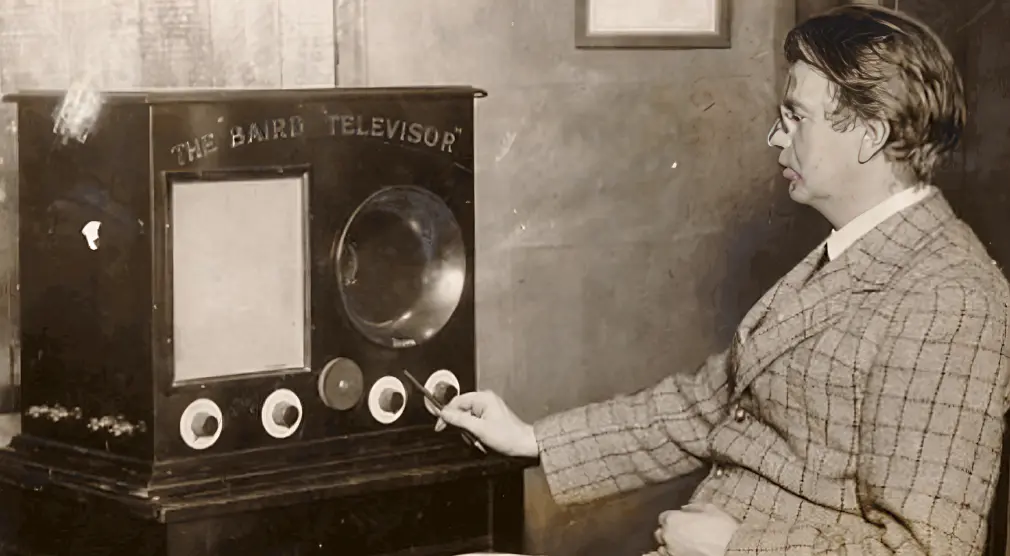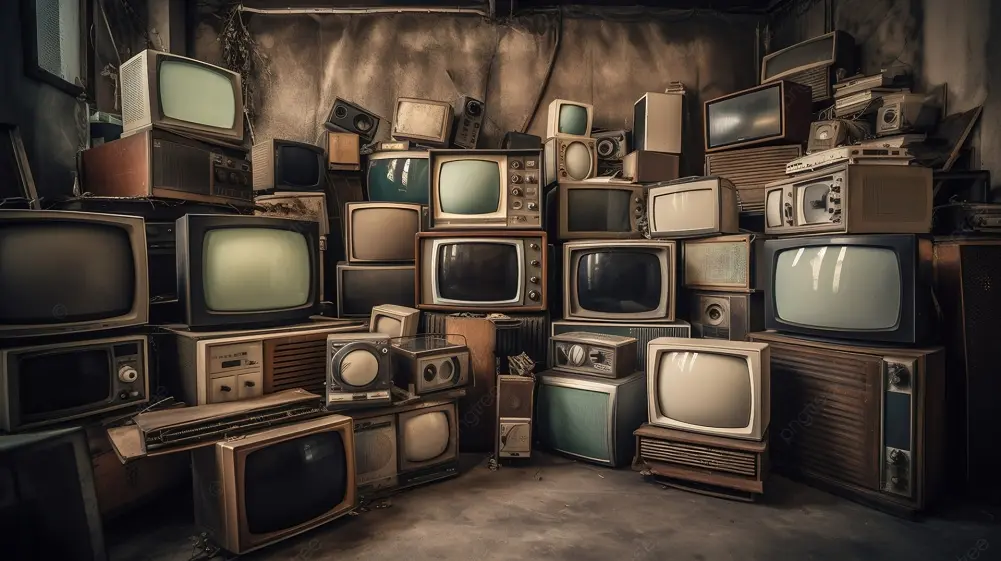- 1 Introduction – The History of Television
- 2 Early Concepts and Inventions – the history of television
- 3 The Birth of Modern Television
- 4 The Rise of Commercial Broadcasting
- 5 The Golden Age of Television
- 6 The Advent of Color Television
- 7 Cable and Satellite Television Revolution
- 8 Television in the Digital Era
- 9 The Streaming Age: Television Goes Online
- 10 Impact of Television on Society
- 11 Conclusion: The Future of Television
Introduction – The History of Television
Television has come a long way from its humble beginnings as an experimental technology to becoming a cultural mainstay and a household necessity. This revolutionary invention has not only transformed how we consume information and entertainment but has also significantly impacted society and culture globally. This comprehensive history of television traces its remarkable journey over the decades, highlighting major milestones that have defined its growth.
Early Concepts and Inventions – the history of television
The idea of transmitting images through electronic signals originated in the 19th century. In the late 1800s, inventors such as Paul Nipkow and Alexander Bain laid the groundwork for what would eventually become television.
- Paul Nipkow: In 1884, Nipkow invented the Nipkow disk, a mechanical device that could scan an image, breaking it into small parts. This disk was crucial to the development of early television as it enabled the transmission of visual information.
- Cathode-Ray Tube: At the turn of the 20th century, Karl Ferdinand Braun invented the cathode-ray tube (CRT), which would become a foundational component of the first television sets. The CRT allowed the conversion of electrical signals into visible images, crucial for TV’s evolution.
These early inventions paved the way for the breakthroughs that came in the 1920s, when inventors began working on both mechanical and electronic methods to transmit visual information.
The Birth of Modern Television
The early 20th century saw many competing technologies to create what we now call television. Two key figures—John Logie Baird and Philo Farnsworth—were pivotal in the development of television.

- John Logie Baird: A Scottish engineer, Baird successfully demonstrated the first working mechanical television system in 1926. He achieved the first transatlantic TV broadcast and color television experiments in the late 1920s.
- Philo Farnsworth: The American inventor Philo Farnsworth is credited with the invention of the first fully electronic television system. In 1927, Farnsworth successfully transmitted an image using electronic scanning, which laid the foundation for the television systems we use today.
These developments led to the birth of electronic television, a more reliable and scalable method compared to the mechanical systems initially used.
The Rise of Commercial Broadcasting
With the foundational technology in place, the next stage was making television accessible to the public. By the 1930s, radio was a popular medium, and television was seen as its visual successor.
- The 1939 New York World’s Fair: The United States showcased television to the masses for the first time at the 1939 World’s Fair in New York, where RCA (Radio Corporation of America) introduced the first mass-produced television sets.
- First Broadcast Stations: The early television stations, such as BBC in the UK and NBC in the United States, began regular broadcasting. By the 1940s, television broadcasts included news, sports, and entertainment, marking the beginning of scheduled programming.
The Golden Age of Television
The 1950s are often referred to as the Golden Age of Television. This era saw the emergence of iconic TV shows, live dramas, and sitcoms that captured the hearts of viewers across the globe.
- Dramas and Live Broadcasts: Programs like “I Love Lucy” and “The Honeymooners” became household favorites. The live drama anthologies, such as “Playhouse 90,” brought compelling storytelling to millions of homes.
- Cultural Impact: Television began to dominate American culture, influencing everything from fashion to political discourse. The accessibility of televisions, combined with increased advertising revenue, meant that the medium was quickly outstripping radio and film as the primary form of entertainment.
- Television and Family: The concept of “family time” was closely tied to television, with many families gathering in their living rooms to watch evening broadcasts. TV became not just a form of entertainment, but also a medium that shaped social norms and trends.
The Advent of Color Television
The next significant technological milestone was the development of color television.
- Color TV Experiments: The concept of color broadcasting was introduced as early as the 1920s, but it wasn’t until the 1950s that practical, mass-market color TVs became a reality. RCA introduced the first color television in 1954, but widespread adoption didn’t occur until the 1960s due to the high costs of the sets.
- Standardization: In 1953, the FCC (Federal Communications Commission) approved the NTSC color standard, which allowed for the unified broadcasting of color signals across the country. Shows like “Bonanza” became popular early adopters of color.
Cable and Satellite Television Revolution
The 1970s and 1980s marked the beginning of the cable and satellite revolution, which dramatically expanded the variety of programming available to viewers.
- Cable Television Growth: Cable television began as a solution for areas that had difficulty receiving broadcast signals. However, it quickly evolved into a mainstream service, offering dozens of specialized channels, such as MTV, CNN, and ESPN, which redefined the possibilities for niche programming.
- Satellite Television: The introduction of satellite television enabled signals to be broadcast globally. Satellite technology allowed for the creation of 24-hour news services and global live events, such as the broadcast of international sports tournaments and political events.
Television in the Digital Era
The 1990s and 2000s saw the transition from analog to digital broadcasting, which improved picture and sound quality significantly.
- Digital Television Transition: In the early 2000s, countries began transitioning from analog to digital broadcasting, resulting in better resolution, improved sound quality, and more efficient use of the radio spectrum. The digital transition also made high-definition television (HDTV) possible, greatly enhancing the viewing experience.
- Flat-Screen Technology: The advent of plasma, LCD, and later LED screens in the 2000s made bulky CRT televisions obsolete. Flat-screen televisions became the standard, making it possible for TVs to be larger, thinner, and more efficient.
The Streaming Age: Television Goes Online
The most significant shift in recent television history is its transition to online platforms, heralding the beginning of the streaming era.
- On-Demand Viewing: Platforms like Netflix, Hulu, and Amazon Prime Video have changed how people watch television. Instead of waiting for scheduled broadcasts, viewers can now watch content on demand, giving them more control over their viewing habits.
- Cord-Cutting Trend: With the rise of streaming services, many households have opted to “cut the cord” and move away from traditional cable packages. Streaming services offer a wider variety of content, often at a lower cost than cable, and can be accessed on multiple devices.
- Original Content: Streaming platforms have also begun producing their own original content, such as series like “Stranger Things” and “The Crown,” which have garnered significant critical acclaim. This has led to increased competition between traditional TV networks and online platforms.
Impact of Television on Society
Television has had a profound impact on modern society, affecting culture, politics, and how we perceive the world. – the history of television
- Cultural Unification and Influence: Television has been a powerful tool in shaping cultural trends and unifying audiences around common experiences. Iconic TV moments—from the moon landing in 1969 to globally watched events like the World Cup—have created shared memories for millions.
- Education and Awareness: Educational programs like PBS and children’s shows such as Sesame Street have been instrumental in providing early education. Similarly, documentaries and news broadcasts have played a crucial role in raising awareness about important social and political issues.
- Political Influence: Television has been a significant medium for political campaigning and propaganda. Televised debates, like the famous 1960 debate between John F. Kennedy and Richard Nixon, highlighted how TV could influence public opinion. News channels also shape political discourse and public perception of events, as viewers tend to align with networks that reflect their personal ideologies.
- Commercialization and Consumerism: The commercial aspect of television cannot be ignored. From the beginning, television was funded by advertising revenue, and commercials have been a powerful driver of consumer culture. Products advertised on television have reached a massive audience, influencing buying habits for decades.
- Criticism and Concerns: Despite its positive impacts, television has also faced criticism. Concerns about the effects of excessive screen time, exposure to violence, and the portrayal of stereotypes have been widely discussed. Many believe television can contribute to passive consumption, reducing time for physical and social activities.
Conclusion: The Future of Television
The history of television reflects the broader story of human ingenuity and the desire for connection, entertainment, and education. From the early, grainy black-and-white images broadcast through rudimentary systems to today’s seamless, on-demand streaming in 4K resolution, the evolution of television is a testament to the rapid pace of technological innovation.
Looking ahead, virtual reality (VR) and augmented reality (AR) may represent the next frontier for television. Streaming services will continue to shape content distribution, and the line between television, film, and user-generated content will blur even further. As technology advances, one thing remains certain: television, in whatever form it takes, will continue to captivate audiences around the world, providing a window into both the world at large and the rich narratives of our human experience.

